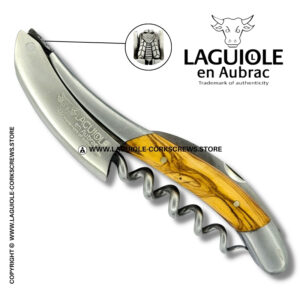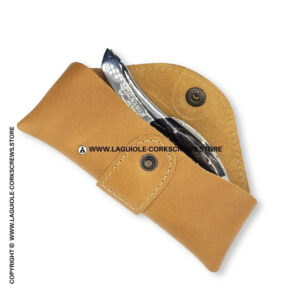Two tools, one tradition — but distinct purposes. Here’s how to choose between the Laguiole en Aubrac sommelier and the classic folding knife with corkscrew.
Both are rooted in the same artisanal heritage. Both carry the emblematic bee, are assembled by hand in southern France, and reflect the refinement of the Laguiole tradition. Yet they serve different moments, different needs, and different expectations.
Whether you’re looking for a wine tool to use at home, in a professional setting, or during a picnic in the countryside, understanding the distinction between these two creations will help you make the right choice — and avoid confusing “corkscrew-equipped” with “wine-optimized.”
Two Icons of French Craftsmanship, One Heritage
The Laguiole knife with corkscrew and the Laguiole en Aubrac sommelier both stem from the same historical backdrop: a rural region where knives were tools for life — functional, elegant, and symbolic of identity. Over time, the simple folding knife evolved to include a corkscrew, serving shepherds, travelers, and innkeepers who needed to uncork a bottle wherever they went. Later, the sommelier emerged as a dedicated instrument designed specifically for the act of opening wine.
Despite their different functions, both tools are made in the same workshop in Aubrac, by a single artisan from start to finish. They are part of the same tradition — but not the same experience.
Laguiole Knife with Corkscrew: A Versatile Companion
The Laguiole folding knife with corkscrew is a multifunctional object that combines the utility of a pocketknife with the convenience of a wine opener. It is a classic accessory for outdoor meals, hikes, picnics, and rustic table settings. The integrated corkscrew, discreetly positioned on the back, features a four-spiral steel worm — perfectly suited for occasional wine service.
Beyond its corkscrew, this knife includes many iconic design elements:
- Yatagan Blade: A slim, slightly curved blade inspired by traditional Turkish sabers. It folds smoothly into the handle and is ideal for slicing bread, cheese, or charcuterie.
- The Bee: The decorative emblem at the top of the spring, often sculpted or forged, symbolizing the pastoral life of the Aubrac region. Not to be confused with the old cutlery term “mouche.”
- Guilloché Spine: Hand-filed decoration on the spring and around the corkscrew base, giving each knife a unique signature. Motifs range from geometric to floral.
- Mitres: Metal ends at both ends of the handle (in stainless steel or brass), protecting the wood or horn from daily impacts.
- Platines: The structural side plates, cut to match the shape of the handle, which support the assembly of all components.
- Shepherd’s Cross: A design made with seven small pins on one side of the handle — a reference to shepherds praying in isolation by planting their knives upright in bread or soil.
Elegant, practical, and steeped in legend, the Laguiole knife with corkscrew is an ideal accessory for casual wine enjoyment — but it is not a sommelier’s tool.
→ Looking for this multifunctional classic? Discover our Laguiole knives with corkscrew.
Laguiole en Aubrac Sommelier: Precision in the Service of Wine
The Laguiole en Aubrac sommelier was designed specifically for wine service. Its engineering, shape, and components are all optimized for opening bottles smoothly, without damaging the cork or disturbing sediment. It is the result of a close collaboration between designers, wine professionals, and artisan cutlers.
Its key characteristics include:
- Conical Worm: Forged with five long spirals, it penetrates corks cleanly and holds them firmly, reducing the risk of breakage.
- Single Lever: A hand-adjusted mechanism that allows smooth extraction in one motion — no double-hinge or repositioning required.
- Foil Cutter Blade: A short, finely serrated blade for cleanly cutting capsules around the bottle neck.
- Refined Curves: The entire silhouette is sculpted to fit the hand naturally and elegantly — suitable for professionals and collectors alike.
- The Bee and Guillochage: Like its knife counterpart, the sommelier features the iconic Laguiole bee and a hand-decorated spine, engraved with the same level of detail and care.
This tool is more than an accessory — it is an instrument. Born from the cultural history of the Aubrac region and elevated through technical refinement, it has become a reference among wine lovers. From the bougnats of Paris in the 1950s to today’s sommeliers and connoisseurs, the Laguiole en Aubrac corkscrew is the gold standard for anyone who values both performance and heritage.
→ Explore the full collection of Laguiole en Aubrac corkscrews on our website for engraved gifts and handcrafted models. See all Laguiole corkscrews.
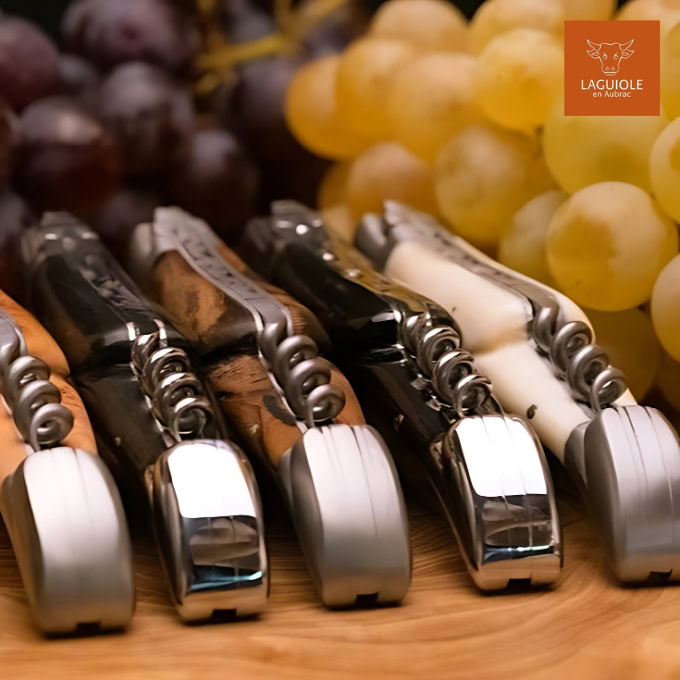
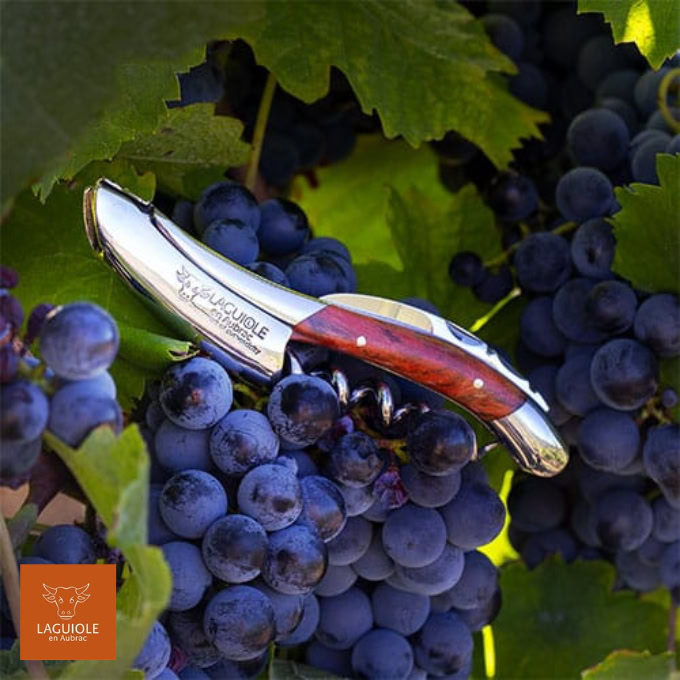
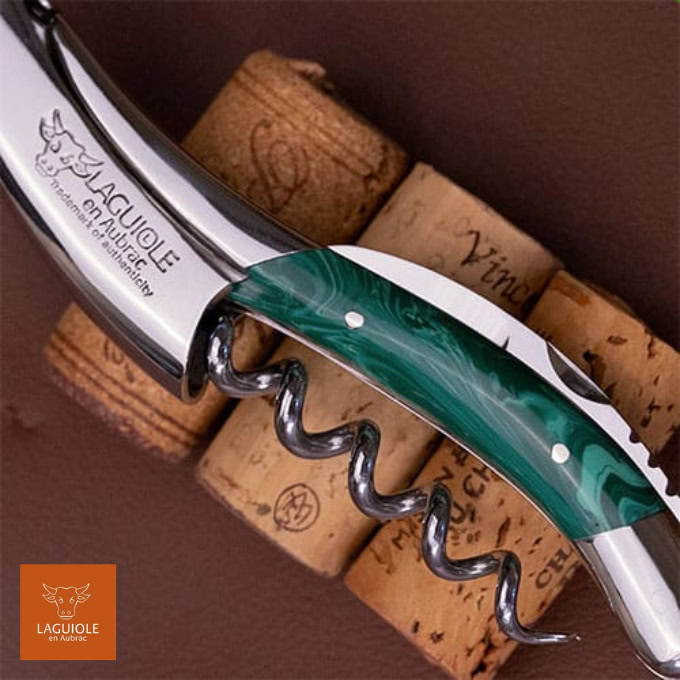
Which One Should You Choose?
If you are seeking a beautiful and useful tool for occasional wine service, perhaps while enjoying cheese or saucisson in the countryside, the Laguiole knife with corkscrew is an excellent and authentic choice. It offers versatility and charm, and speaks of tradition and travel.
But if your primary intention is to open bottles of wine — at home, with guests, or as part of your professional activity — the Laguiole en Aubrac sommelier is clearly the superior tool. It is not an afterthought. It is not a fallback. It is a product of deliberate design, refined function, and singular purpose.
The corkscrew on the knife is useful. The corkscrew on the sommelier is exceptional.
Conclusion: Two Expressions, One Legacy
Whether you choose the elegance of a Laguiole folding knife with corkscrew or the refined precision of a Laguiole en Aubrac sommelier, you are acquiring a piece of genuine craftsmanship — made entirely in France, by hand, by a single artisan.
These tools are not just functional. They are stories — of shepherds, of winemakers, of artisans. They are ways to experience beauty through utility, and heritage through the hand.
→ Not sure how to spot a real Laguiole en Aubrac product? Read our guide to authenticity.





